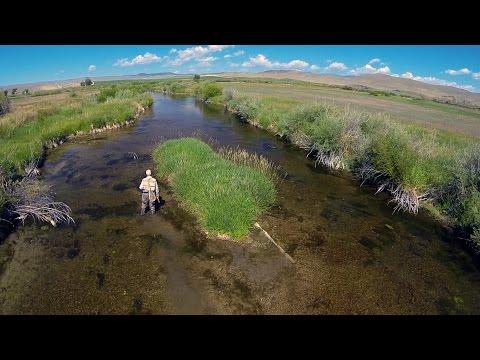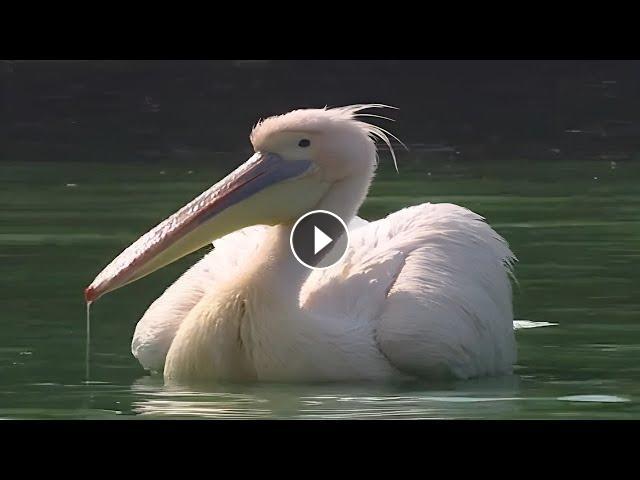Rosy Pelican-Pelecanus onocrotalus
A. Appearance
• Pelecanus onocrotalus is also known as the great white pelican, rosy pelican or white pelican.
• A big bird slightly bigger than a vulture. About 140-183 cm in length with a 30 to 47 cm. big pink and yellow bill and a pale -yellow gular pouch. Adult males weigh 9.0 to 15.0 kg.
• Feathers on forehead ending in a point above the bill.
• White or rose tinged with a tuft of yellow feathers on the breast. Slight crest on the head.
• Wing primaries and some secondaries black.
• The forehead is swollen.
• Sexes alike but females smaller measuring about 148 cm and weighing 5.4 to 9 Kg.
• Juveniles sooty black.
• Pouch serves as a scoop during fishing and serves as a net to store catch.
• The wingspan measures 226 to 360 cm., the highest wing span among extant flying animals except the great Albatross.
• Distinguished from all other pelicans by naked face with feathering on forehead reduced to central sharply pointed wedge.
• Life span 51 years.
•The bird is mostly silent but has a variety of low-pitched lowing, grunting and growling calls. The adults may make low, hoarse display calls during the breeding season.
B. Distribution
• Asia, Europe, Africa. Partly resident and partly winter. Punjab to Assam. Occasional in South India.
• Usually in large congregation in lakes and lagoons. Flocks float buoyantly or rest on mud banks a preening themselves. Nest-a bed of feathers on ground.
• It is one of the most widely distributed species.
C. Habits
• Great white pelicans live, breed, migrate, feed and fly in formation in large colonies.
• When hot they spread their wings, or gape to cool down.
• To defend territories a male threatens intruders by gaping, clapping its bill, bowing or attacking.
D. Feeding
• They mostly catch fish. They have also been known to eat chicks of other birds.
• Feed mostly on fish. 300 to 600 gms.
• Fishing is generally over by 8 to 9 am beyond which they spend time on small islands or sandbars, resting, preening and bathing.
• Gular pouch may carry up to 4 kg fish.
E. Reproduction
• They are monogamous and form long term bonds.
• In breeding season, the male has pinkish skin while the female has orangish skin on its forehead.
• In India, the breeding season may range from February to April.
• Large number of pelicans breed together in colonies. Majority build nests on scrapes in the ground lined with grass, sticks feathers and other material.
• The clutch includes 2 ivory white eggs incubated by female for 31 days.
• Chicks are naked when born but develop blackish brown down feathers.
• Young are cared by both parents.
• Young fledge at 65 to 75 days of age and about 64% reach adulthood. Sexual maturity is reached at 3 to 4 years of age.
• Pouch may be used for production of tobacco bags, skin is turned to leather, guano is used as fertilizer, fat of young may be converted to oil and used for traditional medicines in India and China. They are shot for meat in Ethiopia. Generally, on decline but of least concern because of a long range.
• They are monogamous and form long term bonds.
F. Population Threat and Conservation Status
• Predators for eggs and chicks include mammals, other birds like crows, fishing eagles.
• The adults have few predators on land.
• Threats in India and South East Europe primarily due to habitat destruction, flooding, pollution, disease and disturbance of breeding sites. If disturbed the whole colony will move out not to return.
• Currently this species is classified as least concern on IUCN.
©Srimaa Communication
Acknowledgements-Dr. Yashpal Singh, Mrs. Neena Singh, Mr. Rajesh Bedi, Manoj Kumar Yadav
A. Appearance
• Pelecanus onocrotalus is also known as the great white pelican, rosy pelican or white pelican.
• A big bird slightly bigger than a vulture. About 140-183 cm in length with a 30 to 47 cm. big pink and yellow bill and a pale -yellow gular pouch. Adult males weigh 9.0 to 15.0 kg.
• Feathers on forehead ending in a point above the bill.
• White or rose tinged with a tuft of yellow feathers on the breast. Slight crest on the head.
• Wing primaries and some secondaries black.
• The forehead is swollen.
• Sexes alike but females smaller measuring about 148 cm and weighing 5.4 to 9 Kg.
• Juveniles sooty black.
• Pouch serves as a scoop during fishing and serves as a net to store catch.
• The wingspan measures 226 to 360 cm., the highest wing span among extant flying animals except the great Albatross.
• Distinguished from all other pelicans by naked face with feathering on forehead reduced to central sharply pointed wedge.
• Life span 51 years.
•The bird is mostly silent but has a variety of low-pitched lowing, grunting and growling calls. The adults may make low, hoarse display calls during the breeding season.
B. Distribution
• Asia, Europe, Africa. Partly resident and partly winter. Punjab to Assam. Occasional in South India.
• Usually in large congregation in lakes and lagoons. Flocks float buoyantly or rest on mud banks a preening themselves. Nest-a bed of feathers on ground.
• It is one of the most widely distributed species.
C. Habits
• Great white pelicans live, breed, migrate, feed and fly in formation in large colonies.
• When hot they spread their wings, or gape to cool down.
• To defend territories a male threatens intruders by gaping, clapping its bill, bowing or attacking.
D. Feeding
• They mostly catch fish. They have also been known to eat chicks of other birds.
• Feed mostly on fish. 300 to 600 gms.
• Fishing is generally over by 8 to 9 am beyond which they spend time on small islands or sandbars, resting, preening and bathing.
• Gular pouch may carry up to 4 kg fish.
E. Reproduction
• They are monogamous and form long term bonds.
• In breeding season, the male has pinkish skin while the female has orangish skin on its forehead.
• In India, the breeding season may range from February to April.
• Large number of pelicans breed together in colonies. Majority build nests on scrapes in the ground lined with grass, sticks feathers and other material.
• The clutch includes 2 ivory white eggs incubated by female for 31 days.
• Chicks are naked when born but develop blackish brown down feathers.
• Young are cared by both parents.
• Young fledge at 65 to 75 days of age and about 64% reach adulthood. Sexual maturity is reached at 3 to 4 years of age.
• Pouch may be used for production of tobacco bags, skin is turned to leather, guano is used as fertilizer, fat of young may be converted to oil and used for traditional medicines in India and China. They are shot for meat in Ethiopia. Generally, on decline but of least concern because of a long range.
• They are monogamous and form long term bonds.
F. Population Threat and Conservation Status
• Predators for eggs and chicks include mammals, other birds like crows, fishing eagles.
• The adults have few predators on land.
• Threats in India and South East Europe primarily due to habitat destruction, flooding, pollution, disease and disturbance of breeding sites. If disturbed the whole colony will move out not to return.
• Currently this species is classified as least concern on IUCN.
©Srimaa Communication
Acknowledgements-Dr. Yashpal Singh, Mrs. Neena Singh, Mr. Rajesh Bedi, Manoj Kumar Yadav
- Category
- Fly Fishing




